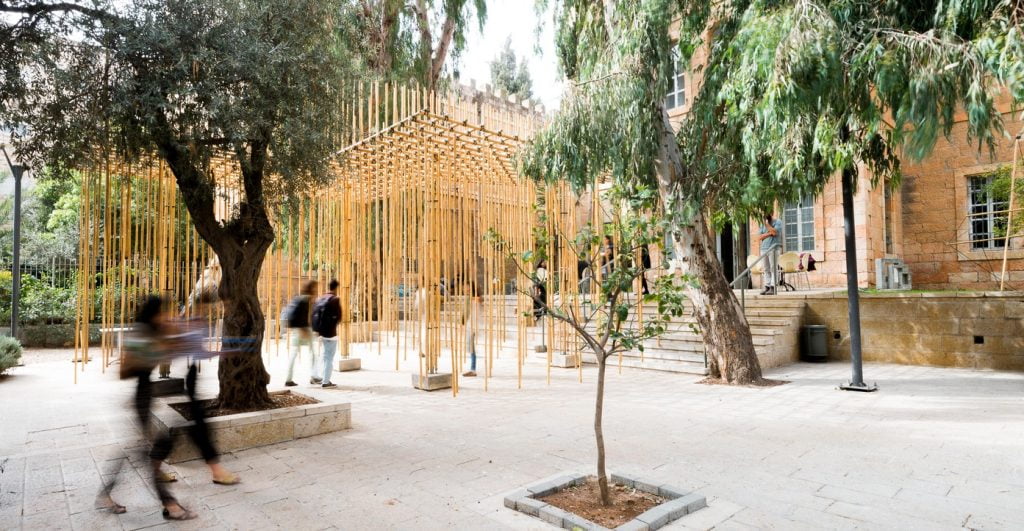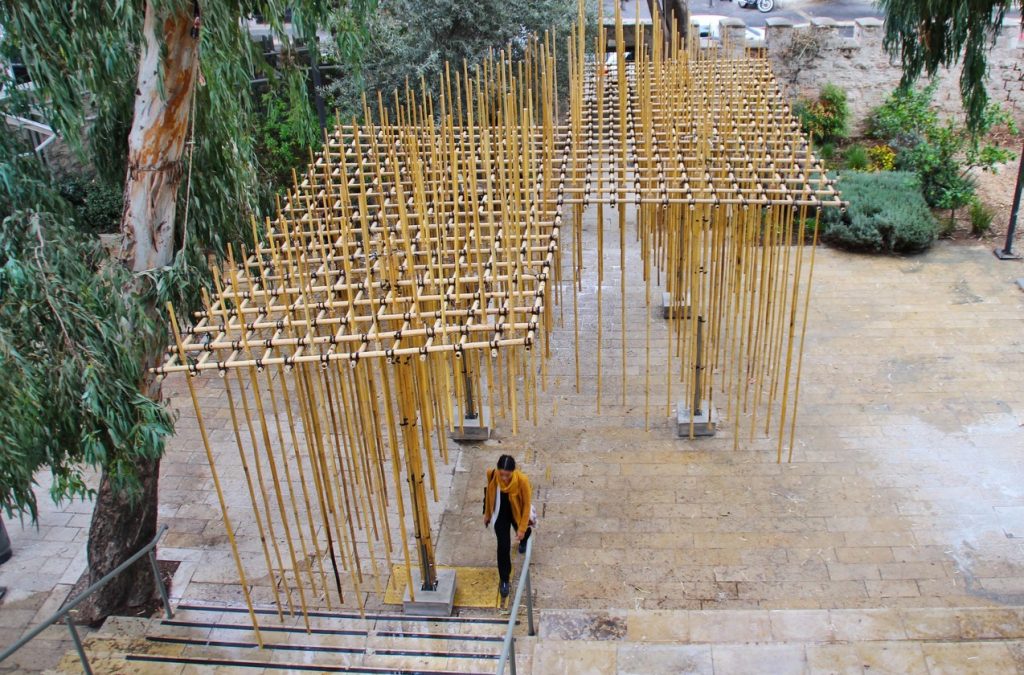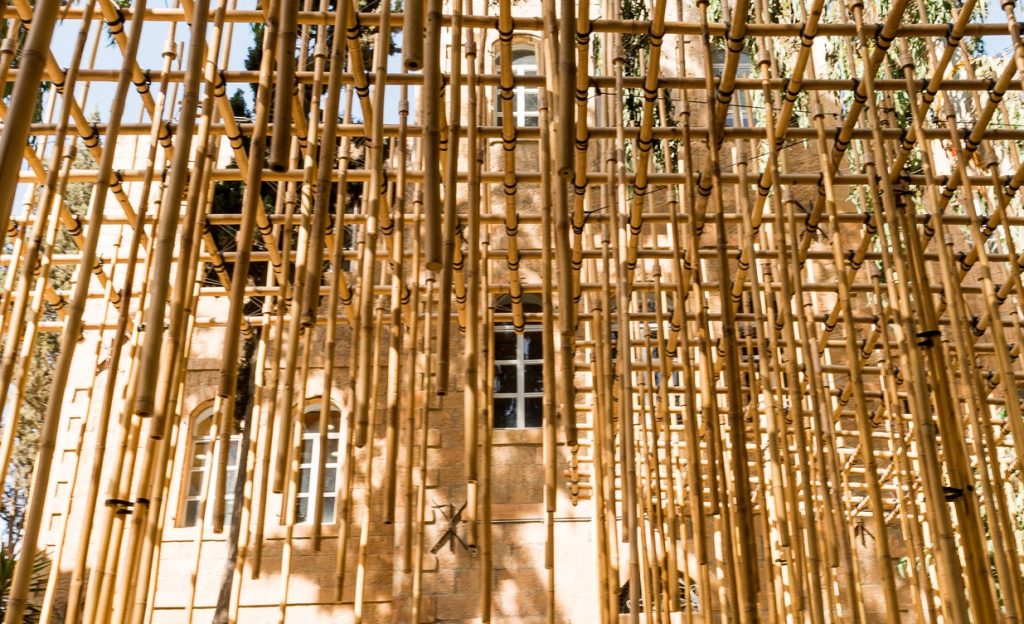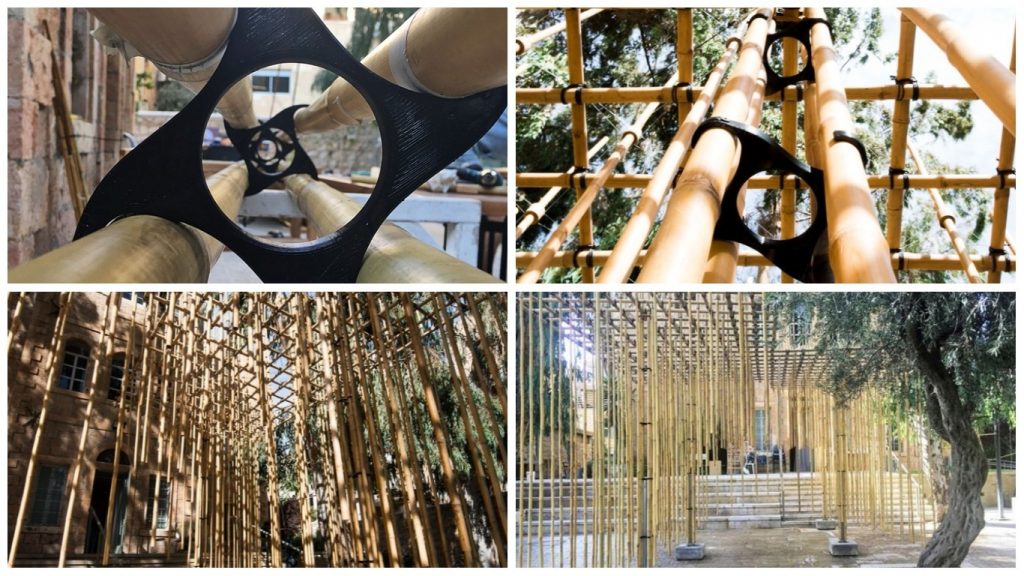Jerusalem is home to some of the most famous and recognizable architectural structures in the world. The city even has a type of limestone named after it — Jerusalem stone — which has been used in construction in and around Jerusalem since ancient times.
Given the rich historical context of Jerusalem, an experimental construct consisting of suspended bamboo and other 3D printed parts would be quite a head-turner in the holy city.
SEE ALSO: Israeli Textile Designer Reshapes Fashion Tech With 3D Pen For Kids
Such a structure was set up by Israeli architecture students in their third year from Jerusalem’s prestigious Bezalel Academy of Arts and Design, who built the pavilion system using bamboo canes, ropes, and special 3D-printed joints, and anchored it with concrete footers. Interestingly, the construct can be assembled and disassembled using different configurations of the materials.
The structure, measuring 40 square meters, was designed using computer modeling to experiment with different layouts and utilized over a dozen small, four-cornered joints made with a 3D printer using fused filament fabrication (FFF), a process that uses a continuous filament of a thermoplastic material. The structure is porous and the bamboo canes appear suspended at different heights, with each piece tied to a horizontal grid via rope.
The bamboo pavilion welcomes “visitors, students, and faculty with an inspiring play of shadows and lights, and invites them to engage with the hanging bamboos while challeng[ing] their perception of being ‘inside’ and ‘outside,’ the designers told ArchDaily this month.
The pavilion sat in the entrance courtyard of Bezalel’s Architecture Department in central Jerusalem for a month over the summer, the result of a summer program at the university led by architect Barak Pelman who encouraged the students to experiment with natural building materials and digital design.
Pelman tells NoCamels that the summer program affords the students an opportunity to undertake different projects than throughout their school year and that he sought to have them experience the concept of design from inception to finish.
Pelman says the assignment was to use “natural material with cutting-edge technology to come up with new solutions for known problems in design [such as joints].”
Sign up for our free weekly newsletter
SubscribeThe students, he says, had to come up with an innovative way to use the materials and to structure them so as to open up new design possibilities and applications.
The 3D-printed joints, he explains, were part of that concept. Each of the 16 joints, dubbed the “ninjas” as they look like ninja stars,” was designed specifically for the bamboo canes it held up because each cane was different and had a different diameter.”
With the 3D printer, “there is potential there for a non-standard solution,” that was still tailored to the material, Pelman tells NoCamels.
Working with 17 students and a number of architects over the course of seven weeks throughout the program, Pelman says another important part of the project was the environmental aspect. “We wanted to come up with an architectural expression that would also have little impact on the environment,” he says.
SEE ALSO: From Art To Extraordinary Architecture, Legendary Israeli Designer Ron Arad Keeps Stunning The World
When the structure was disassembled, half of the materials went back to the vendors while the other half went to Bezalel’s Architecture Department to be re-used in future projects, according to Pelman
On all these levels — the pedagogy, the sustainability and the use of advanced technology — “the project was very innovative,” he says, noting the collaboration with the Bamboo Center Israel which provided the bamboo cane, and the Israeli Green Building Council and the Israeli Ministry of Environmental Protection, which provided some funds.
Related posts

Editors’ & Readers’ Choice: 10 Favorite NoCamels Articles

Forward Facing: What Does The Future Hold For Israeli High-Tech?

Impact Innovation: Israeli Startups That Could Shape Our Future







Facebook comments